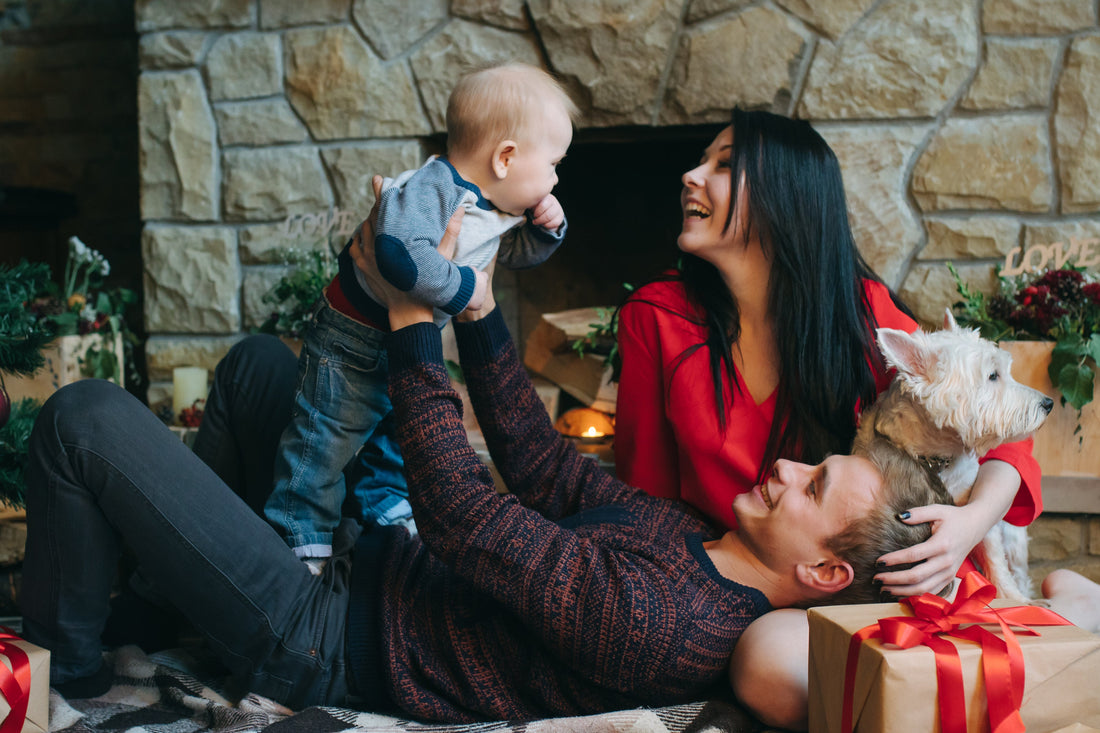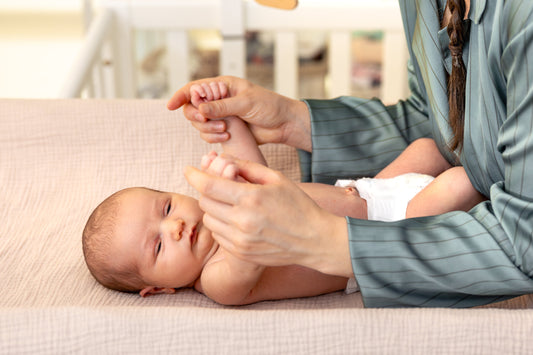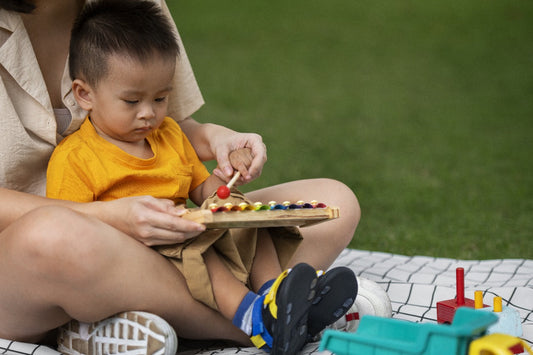
Budget-Friendly Baby Gifts Parents Will Truly Appreciate
Safety gear is more than just ticking a box; it is a safeguard between your child’s well-being and unwanted injuries.
Imagine a young cyclist hitting the pavement only during their first rides. If they are wearing ill-fitted, uncertified, and poorly made helmets and safety gear, the damage could be far worse than if they had proper protection.
Choosing the right safety gear for kids not only protects their growing bodies but also encourages self-confidence and independence during such real-life incidents.
The substandard gear could slip, break, or fail entirely, sometimes causing more harm than good.
On the other hand, well-certified safety gear, vigorously tested for impact resistance and durability, offers more than just features. They serve as lifelines when the children learn to skate, bike, or even climb, offering support during their essential development journey.
This blog validates the importance of safety gear for kids and also mentions prevention of common mistakes by parents when buying baby gear.
Mistake #1: Choosing Based On Price Alone
Protecting one’s child isn’t about shielding them from every fall but preparing them to rise again after every fall. So, opting for the cheapest option could become a costly mistake.
While purchasing, one of the biggest kids’ safety gear mistakes made by parents is opting for a budget-friendly option over an authentic product.
The substandard safety gear often compromises on materials, fit, and testing standards, putting your child at a greater risk. For example, a low-cost helmet might use a thinner foam padding or weak straps that could fall under pressure.
On the other hand, the standard certified safety gear is expensive but contains higher-grade materials, proper ventilation, adjustable features to accommodate the growth spurts, and various other safety certifications to ensure their successful passing of high-endurance safety tests.
Therefore, a well-certified safety gear would incorporate a safe price tag that includes:
- Certified labeling from trusted safety bodies.
- Adjustable sizing for a secure, growing fit
- Durable outer shells and thick, energy-absorbing padding
- User-friendly fasteners designed for child hands.
Mistake #2: Ignoring Safety Certifications
Safety certifications are more than just a formality and ignoring them could lead to dangerous outcomes and unfortunate incidents.
Importance Of BIS, EN, ASTM, And Other Certifications
- BIS (Bureau of Indian Standards): It is mandatory for many electronic goods in India and ensures the product's compliance with national safety standards.
- EN (European Norms): This is a European safety standard that is usually used for toys, PPE, and electronics. Here, EN71 is critical for toy safety.
- ASTM (American Society for Testing and Materials): This is globally recognized in children’s items, including industrial materials and sports equipment.
Overall, the presence of these certification stamps marks a good product quality that has undergone rigorous testing for durability, safety, and performance. This further ensures peace of mind in the parents.
How To Verify Authentic Certifications?
This is one of the most important child safety gear tips to ensure its full protection.
- Check the official databases of these certification bodies, as many have public verification portals. For example, BIS has an online system to check the registration numbers.
- Always look for authentic labels carrying a certification logo and license or standard numbers that could be cross-checked.
- When purchasing in bulk, either request the seller for compliance certificates or test reports or involve a third-party verification like certification consultants to confirm the product’s legitimacy.
Dangers Of Uncertified Knockoffs
Choosing the wrong safety gear for kids could result in a dangerous situation. Let us now understand how.
- Electrical Hazards: In equipment like helmets, knee pads, or wrist guards with lights, if containing uncertified parts, they could spark, overheat, or even cause shocks due to faulty wiring.
- Toxic Materials: Safety gear made of uncertified plastics or dyes could expose children to harmful toxins like lead, BPA, or skin irritants. This could further cause developmental delays in them.
- Structural Failures: Non-certified or cheap helmets, knee guards, or pads could risk falling off, breaking under pressure, or even holding the potential of serious injuries during the fall.
- Warranty and Insurance Issues: Product warranties and insurance are quintessential when it comes to safety. Injuries caused by uncertified safety gear often miss out on important health or liability insurance coverage.
- Legal Repercussions: Selling or gifting such uncertified safety gear could violate the child safety regulations, inviting recalls, legal action, and even financial loss in the long term.
#Pro-Tip: Safety gear that is usually priced lower than usual often compromises on certain protection and could be highly risky for the kids.
Mistake #3: Not Considering Child’s Age & Size
Studies claim that almost 31% of head injuries in children using bicycles, skateboards, or scooters are linked to improper or poorly fitted helmets.
What Parents Get Wrong About Child Safety Gear
One of the most common mistakes made by parents while choosing the safety gear is opting for the mindset of “one-size fits all” or that the child will “grow into it.”
In fact, safety does not define age, and neither should its investment. Improper gear gives a false sense of security and increases the risk of injury.
Also, according to a 2022 report by Safe Kids Worldwide, nearly 1 in 3 parents admitted to investing in the safety gear in a larger size, considering their child would “grow into it.”
Age-Appropriate vs. Generic Gear
i. Age-specific Gear: It is designed to keep the child’s physical development and typical activity level in mind.
ii. Generic or adult-sized gear: This often lacks customized design that makes it ineffective and even hazardous. For example, a too-large-sized helmet might slip off during a fall, while a stiff knee guard could restrict the natural blood flow and leg movement, causing imbalance.
How to Choose The Right Safety Gear For Toddlers vs. Older Children?
i. Toddlers
Imagine choosing safety gear for a 3-year-old toddler who is just learning to ride a balance bike.
- Helmet: Be sure to opt for a safety-rated, lightweight, impact-resistant material with extended coverage at the back and head. This is because toddlers are more prone to falling backwards.
Also, look for soft chin straps and a dial-fit system at the back while avoiding too many vents to prevent an improper fit. For instance, toddler bike helmets usually consist of a rounder shape and a deeper back for better occipital protection.
- Knee Pads: Opt for soft-shell pads with flexible foam padding, containing wide and adjustable Velcro straps. This would encourage easy movement without causing discomfort.
#Pro-Tip: Toddlers are more likely to wear their gear happily when it feels light, comfortable, and gentle.
ii. Older Children
Now, imagine selecting safety gear for a 7-year-old child who’s riding a bicycle more confidently or beginning to learn to scooter or skateboard.
- Helmet: Opt for a helmet with good ventilation, lightweight durability, and a snug fit. This is because at this age children are very active and tend to sweat more. Hence, looking for multiple vents, a dial-adjust system, and removable and washable padding could promote both protection and hygiene.
- Knee pads: Go for medium-profile pads, and hard shells are usually for the ones who tend to fall at higher speeds and on harder surfaces. Ensure that they have a snug fit and flexible hand movement after wearing them.
#Pro-Tip: Choose breathable materials and sleek designs, as older children are more likely to resist gear that feels bulky or sweaty.
Why Doesn’t “Growing Into It” Work for Safety?
A poor fit indicates poor protection that could either slide or fall off if too big or partially cover the area of the head or knees if too small, leaving critical regions with a risk of injuries. This also compromises the functionality of the product.
Also, uncomfortable gear that is tight, itchy, or awkward demotivates the children towards its consistent usage.
#Pro-Tip: Always be sure to measure the child’s head, arms, and legs before making a purchase by referring to the brand-specific size charts and guidelines.
What to Look For In Safety Gear?
Features that offer the right fit, comfort, and real protection should be prioritized. This includes:
- Adjustability: Look for multi-point adjustments in the safety gear, like Velcro pads, dial-fit systems, etc., to ensure a fine fit.
- Breathability & Washability: A soft inner padding and good ventilation would always encourage the child to wear the safety gear longer without any fuss. A washable material also enhances hygiene.
- Secure Fastenings: Double-check the buckles and straps for their snugness and opt for the design that is easier to access for the adults but difficult for the child to tamper with.
#Pro-Tip: Before buying, be sure to do a shake test. Gently direct your child to shake their head, legs, and arms after making them wear it. If the gear moves, it is the wrong size!
Mistake #4: Skipping Comfort For Style Or Features
No matter how stylish, kids tend to refuse anything that gives them discomfort.
- A bulkier or rigid design could overburden them.
- Poor breathability of the material could cause them to overheat, especially during high physical activity.
- Lack of soft padding could cause skin irritation due to sweat or pressure marks.
Therefore, ergonomically designed gear provides essential natural support and movement, reducing resistance and discomfort. Comfortable gear also encourages consistent wear, leading to good self-safety habits.
Mistake #5: Overlooking Real-Use Testing & Durability
The importance of safety gear is immeasurable, as the standard ones only come onto the shelves after their rigorous testing procedures. They are likely designed to withstand real-life situations like falls, scrapes, sudden impacts, and repeated usage.
Many parents invest in products meeting the minimum safety bar, considering it good enough without testing it during actual play, riding, or sports. This further increases its risk of causing disruption.
Real-use testing includes observing the performance of the gear with respect to impact resistance, strap tension, and sudden material stress during the actual child activities.
Be sure to choose safety gear made from durable and tested materials like high-impact ABS shells for helmets or abrasion-resistant neoprene for pads, ensuring longevity and real protection.
Also, avoid using flashy plastic or cheap foam that compresses too easily or tears with friction. A reliable gear might be a little hard on pockets but could protect the child when it really counts.
# Pro-Tip: Replace the products immediately if the product appears loosening, cracking, or bleaching. This indicates it absolutely isn’t built for safety!
How to Choose Safety Gear That Actually Protects?
- Seek age-specific certifications like CPSC or EN1078 that could match the type of safety gear product.
- Always choose a trusted and authenticated brand that offers safety recalls and transparency over their manufacturing details.
- Be sure to scan through the brand’s real-use feedback section by the customers to confirm its performance in reality.
- Prioritize multi-adjustment features like dial fits and flexible straps that grow with your child.
- Always remember that investing in quality gear means fewer replacements, safe outings, and better tear-and-wear resistance over time.
How R for Rabbit Safety Gear Solves These Issues?
R for Rabbit’s Kids protective gear kit is thoughtfully designed to provide the parents with an ease of stress-free experience.
They each come with an age-graded design, are BIS and EN certified, are made of BPA-free materials, and endure a rigorous testing mechanism to ensure children’s everyday usage for their essential growth and development.
If you are looking for a trustworthykids' protective gear set, then do check it out, as R for Rabbit checks all the safety boxes.
Also Read on some Common Mistakes which Parents are making
- 5 Common Mistakes Parents Make While With Kids Scooters
- 9 Common Mistakes by New Parents: Quick Guide
- 7 Common Mistakes to Avoid When Buying Baby Bedding
- 15 Common Baby Car Seats Mistakes Parents are Making
- 9 Common Diaper Changing Mistakes Indian Parents Make
Conclusion - Smarter Choices Mean Safer Kids
Children are naturally very curious and active during their initial years of life. Therefore, as parents, your only responsibility is to provide them with a safe space to do so.
This starts with ensuring safety everywhere they go to provide them with a natural and comfortable ambiance to explore, play, and learn.
Lastly, always be sure to pick the products with the real meaning of “real parenting” in mind, because your child is absolutely your responsibility.



